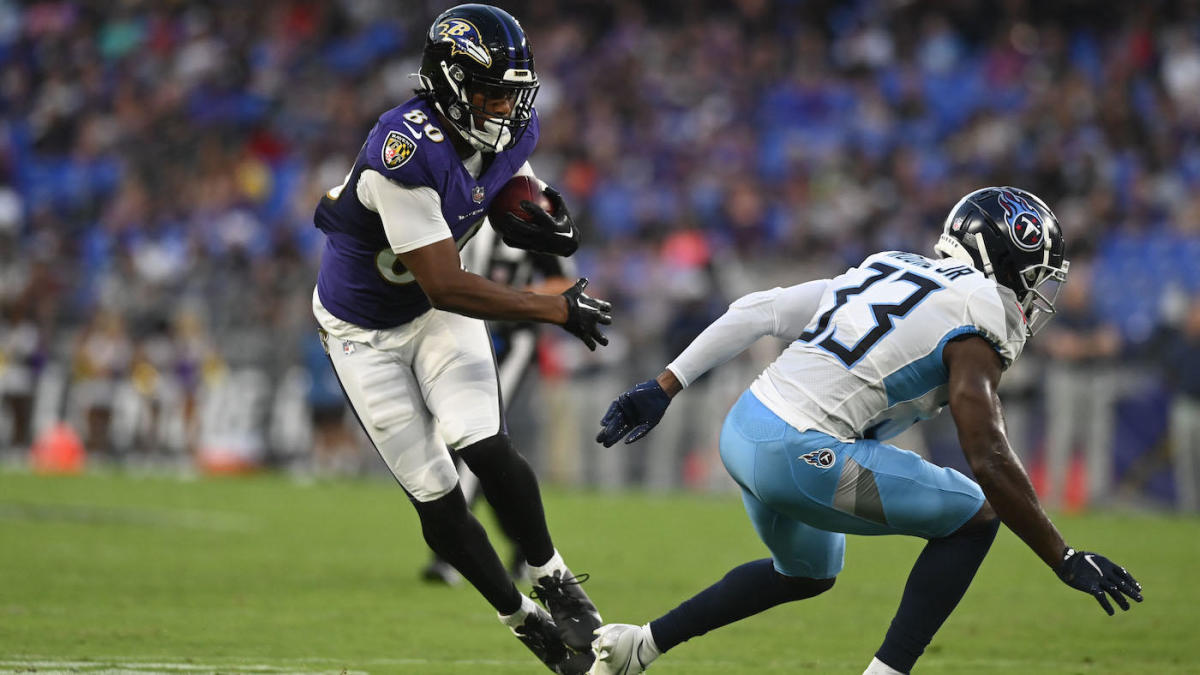A major part of scouting and preparing for the NFL Draft is studying what the National Football League is doing with its schematics as a whole. It’s easy for an analyst to get caught up in what a prospect did at their school in a certain scheme and not think ahead. The real part of scouting is the projection aspect – what is this prospect going to be able to do at the next level?
In the last State of Football article, I spoke about how the introduction of the slot receiver as a mainstay for offenses across the league forced defenses to work the mainstay of their playbook to be working out of the nickel. I discussed how Wes Welker opened the door for smaller receivers who were quick and reliable could win matchups against linebackers and safeties.
With the heavy usage of the nickel package across the league now, most nickel defenders are selected because of their ability to defend against slot receivers.
How Chase Claypool opened up versatility at the slot receiver
When the Pittsburgh Steelers took Chase Claypool in the second round of the 2020 NFL Draft, they were widely criticized for spending such capital on a slow, big receiver. It wasn’t so much that Claypool was slow, but he was big (6’5″ and 230 lbs) and overall viewed as a tweener between tight end and boundary receiver.

When I had spoken with Claypool at the Senior Bowl in Mobile, Alabama, he spoke about his mission – showing that despite his size, he could get low enough through his breaks to run crisp enough routes. While he showed good things at the Senior Bowl, Claypool failed to impress many draft analysts in the media as well as NFL teams who saw him as a capable outside receiver.
Everyone, that is, but the Pittsburgh Steelers.
The Steelers at the time already ran a heavy nickel package, missing their blitz looks by showing utilizing their nickel defender often as a blitzer. In fact, Mike Hilton (who often played their nickel back) was a rusher 60% of the time. It was honest self-reflection that lead them to conceive the idea – what is the weapon that could beat our defense? A giant slot receiver.
Had this sort of thing been conceived before?
It wasn’t an idea that was brilliant and groundbreaking – the New Orleans Saints had utilized their tight end, Jimmy Graham, in this way for the good first half of the decade. Graham was a 6’7″ ex-Miami basketball player who played football sporadically throughout his life. He ended up playing football his last couple of years with the Hurricanes and found himself as a third round draft pick to the team that had just won the Super Bowl the year before.
The knock on Graham was that he looked like a good receiver, but that he couldn’t block. His support as a pass-and-run blocker would be virtually nonexistent. The Saints had no intentions of using him as a pass blocker, as he would go on to dominate from inline and the slot as this giant mismatch weapon that could get upfield and attack the seams. In fact, Graham started a controversy before one season as he wanted his position designation changed from “tight end” to “pass catcher,” because that was the truth. He wasn’t a tight end.

Ironically, not many teams tried to replicate the formula that made Graham so great – not until the Steelers rolled Chase Claypool as a key player in their offense in 2020.
Claypool would go on to have a great rookie season, dominating from the slot and scoring 11 touchdowns while earning all-rookie team honors.
Where is the NFL headed now with the slot receiver position?
The NFL is very much a matchup-based league. Teams are looking for positive matchups that they can win consistently on a week-to-week basis. What it has caused is for teams to grab vast varieties of personnel into their active day roster.
Over the last few years, the NFL has expanded active day rosters from 45 players to 48 players to help teams with this personnel adjustment. While the adjustment was so that teams could carry more offensive linemen going into an active day roster, it’s helped teams expand their personnel more consistently.
It looks like the NFL is headed in a direction where they will have a big slot and a small slot receiver and will use them based on the opponent that they are playing. If they can dominate a nickel defender with their big slot guy, using a tight end size-receiver to win matchups, they’ll go with that. If they have a quick guy who can win those matchups, he will play more.
The slot receiver is a revolving door in the NFL, especially throughout the season with injuries and everything else that happens on a team. The more skills these guys have, the more versatility they offer, the more valuable they will be at the next level.






